 Make a Submission
Make a Submission
About the Journal
Focus and Scope
Desacatos. Revista de Ciencias Sociales is a plural and interdisciplinary publication that disseminates research advances and results on anthropology, history, linguistics and related social sciences, such as geography, sociology or political science.
Peer Review Process
Once the original document has been received, it will go through a pre-screen reading to determine relevance, in charge of one of the members of the Editorial Committee. If approved, two specialists will evaluate the article with the procedure known as double-blind review. Texts must receive two positive opinions to be accepted or two negative ones to be rejected. Results will be reported to authors within less than one year.
Upon approval of the article, the author will sign a letter of assignment of economic rights on his work, through which he/she authorizes CIESAS to publish it in print and electronically.
Open Access Policy
All articles are available for download. The user must acknowledge credits of the work.
Code of Best Practice
Editorial decisions will not be affected by the origin of the manuscript or by author qualities such as nationality, gender, sexual orientation, ethnic origin, race, religious beliefs or political philosophy.
The decision to publish an article is independent of government or other agency policies not related to the journal.
Responsibilities of the Editors
1. They should be responsible for what is published in their journal. They should look for ways to improve the journal, address author needs and inquiries, prevent other non-academic needs from compromising the journal’s ethical standards, and be willing to publish corrections, clarifications, rectifications and apologies, if applicable.
2. They will make sure both the description of the evaluation process and procedure guidelines are accessible to submit an article for evaluation (link to diagram on evaluation).
3. They will ensure that author’s identity remains confidential from the moment manuscripts are received until evaluation is completed.
4. They will protect manuscript intellectual property and copyright.
5. They will use appropriate tools, such as anti-plagiarism programs —for example, Turnitin—, to detect scientific misconduct by the authors.
6. They will ask assessors to comment on authors' misconduct.
7. They will inform the author about progress of the evaluation.
8. They will send to the authors unedited comments by assessors, except when they are offensive or defamatory.
9. They will inform the author of the stage of editorial process in which his/her article is going through.
10. They will not use or disclose information about articles before they are published, without author’s prior consent.
Responsibilities of Members of the Editorial Board
1. Decision to accept or reject an article will be based on its quality, clarity, originality and relevance of its publication in the journal.
2. Members of the Board will establish editorial parameters and will review them frequently so that the journal maintains its quality standards.
3. New members of the Editorial Board may not reverse publication decisions made prior to their joining, unless the manuscript in question presents serious issues.
4. They will not reveal the identity of authors until articles are published.
5. They will keep names of assessors anonymous.
6. They will ensure that appropriate assessors review the manuscripts.
7. They will guarantee that the evaluation process is objective, clear and transparent.
8. They will resolve any controversy that may arise during the evaluation process.
9. They will publish corrections, clarifications, rectifications and apologies, if applicable.
10. If they detect scientific misconduct by authors, they will immediately inform editors.
11. They will publish how they have resolved controversies or cases when authors do not follow clauses of this code of conduct.
Responsibilities of Authors
1. Authors must guarantee that:
Their manuscript has not been previously published and is not being evaluated for other publications.
Information contained in the manuscript has been collected ethically.
Article presented is original and references and data from other works have been cited in an appropriate manner.
2. They will recognize as co-authors those who have participated significantly in the content of the article.
3. They will give corresponding credit to translators of the entirety or segments of the article.
4. They will manifest in the manuscript sources of financial support to carry out the research.
5. To submit an article, they will follow instructions defined by the Editorial Committee and published on the journal’s website.
6. They will follow instructions of the evaluation phases and will observe delivery times for corrections and collations.
7. They must ensure that they have authorizations to reproduce and print the material that is not their property or authorship (graphics, maps, diagrams, photographs, etc.).
8. They will sign a letter authorizing the journal to edit, publish and distribute their article in print and electronic media.
Responsibilities of Assessors
1. They will immediately notify it if the manuscript that they have been requested to evaluate is subject to a conflict of interest.
2. They will inform the editor if they consider that they are not qualified to carry out the evaluation.
3. They will notify editors if they detect scientific misconduct in the manuscript.
4. They will express their comments in a clear, objective and respectful manner in the evaluation format provided by the journal.
5. They will carry out the evaluation and notify result within 30 calendar days.
6. They will treat the evaluation result with confidentiality.
7. They will not use or disclose information contained in the manuscript before its publication.
The following are considered bad scientific practices:
Lack of Ethics in Publication Process
- Fictitious authorship: Appear as authors or co-authors of research not carried out.
- Duplicate publication: Publish the entirety or part of an article previously published.
- Fragmented publication: Divide a work to publish it as independent articles.
- Inflated publication: Add data to a previously published work to publish as a new article.
- Self-plagiarism: Repeat the same content previously written by the author with the intention of publishing as a new article.
Scientific Fraud
- Invention: Elaborate the entirety or part of the data.
- Data forgery and manipulation: Falsify data or methods to meet hypothesis.
- Plagiarism: Use ideas or phrases without citing original sources.
- Incorrect bibliographic citations: Omit relevant citations. Include non-consulted citations. Excess of self-references.
- Publication biases: Force data to obtain positive results and high statistical significance.
- Advertising: Exposing premature results (without verification).
Manuscripts found to incur in these practices will not be evaluated. The editor will write to the author to explain that the article has ben rejected, as well as the journal’s position in these cases and the expected behavior in the future. The editor will also inform the assessor.
If shorter sentences are detected to be copied and there is no sign that the data of others have been offered as their own work, the editor will write to the author and request that he/she modify those segments or indicate citations clearly. The editor will also inform the assessor. If the author refuses to correct the manuscript, the article will be rejected, the journal’s position in these cases will be explained, as well as expected behavior in the future.
To resolve other cases not considered in this code of conduct, editors and the Editorial Board will follow steps indicated by the Committee on Publication Ethics as a reference (https://publicationethics.org/files/Spanish%20%281%29.pdf).
Sources
Committee on Publication Ethics (cope), 2017, “Guidelines”. Available online: <https://publicationethics.org/resources/guidelines>.
Quituisaca-Samaniego, Lilia, 2017, “Algunos elementos de mala conducta científica”, in Numérica Resumiendo, Issue 4. Available online: <http://www.numericaiid.com/publicaciones/NumericaResumiendo/NIID-Resumiendo-4-Mar2017.pdf>. doi: 10.13140/RG.2.2.16893.77285.
Internal regulations
Article I. General description
Sole article. Desacatos, Revista de Antropología Social is a plural and interdisciplinary quarterly publication that presents advances and results of research on issues and problems focused by CIESAS researchers, as well as those that interest social scientists.
Article II. Structure of the journal
The journal is comprised of three main sections:
1. Knowledge and reasons. Thematic section prepared by a team of specialists and coordinated by an academic. It consists of a maximum of five articles plus an op-ed by a renowned researcher, expert in the area of studies and external to the group that develops the thematic proposal.
2. Corners. This section is supported by original collaborations of great exposition quality with relevant information originated in research. It is composed of four articles. Its content is miscellaneous and independent of the Knowledge and Reasons section thematic proposal.
3. Reviews. This section incorporates comments on recent publications in the field of anthropology and social sciences. It also includes essay-type reviews that discuss several books that work around the same topic or line of research. The section is integrated with up to four reviews of recently published books, two of which may be related to the thematic proposal of the section Knowledge and Reasons.
Occasionally there are two other sections:
4. Testimonials. Where unpublished or not so well-known documents of renowned scholars are reproduced, as well as interviews or testimonies that are of value for research and teaching in social sciences. Preference is given to documents related to the thematic proposal of the Knowledge and Reasons section.
5. Legacies. Occasionally included to accommodate the recognition of trajectories of academic leaders who have contributed to anthropological knowledge and social thought in Mexico and the rest of the world.
6. In special cases the number of texts in each section may be expanded or reduced by suggestion of the journal’s decision-making structures.
Article III. Organization and decision-making structures
Sole article. To ensure the journal’s operation, fulfillment of its purposes and guarantee its periodicity, an Editorial Board (EB) will be integrated, a director of the journal will be appointed and an Academic Advisory Body (AAB) will be formed.
Article IV. Purposes of the Editorial Board
Sole article. The Editorial Board (EB) is an academic body that is responsible for:
a) Ensuring scientific quality of published articles
b) Guaranteeing journal compliance with requirements that should be met as an academic dissemination body
c) Establishing editorial policy and ensure its periodicity
Article V. Roles of the Editorial Board
Sole article. The roles of the EB are:
a) To establish content for each journal issue
b) To receive article proposals for publication
c) To review and approve thematic proposals for the section Knowledge and Reasons
d) To screen relevance of all articles
e) To designate reviewers of articles submitted for consideration
f) To determine, based on reviewer’s opinions, if articles are in condition to be published
g) To receive the second version of articles reviewed, where suggested changes are considered, and to verify updates
h) In case of controversy between author and reviewers, evaluate suggestions or conditions indicated in opinions, considering the author's point of view
i) To evaluate texts not subject to external opinion
j) To suggest policies for edition, promotion and commercialization of the journal
k) To keep the AAB informed about progress of the journal, and incorporate points of view of its members in its discussions
l) To supervise alternation in the AAB
m) To resolve unforeseen situations not included in the regulations
Article VI. Integration of the Editorial Board
1. The EB will be composed of:
a) CIESAS Director General
b) Academic Director
c) Deputy Director of Dissemination and Publications
d) Journal editor
e) Eight specialists:
i) Four CIESAS researchers
ii) Four researchers affiliated to national institutions
All members should have prominent prestige in the journal’s focus disciplines, require a PhD degree and a widely renowned scientific production in their discipline community. All members will have voice and vote.
2. The four CIESAS specialists must also be full-time researchers of the institution, with a minimum three-year history.
3. The appointment and replacement of EB specialists will depend on the following CIESAS bodies:
a) Two internal and two external specialists appointed by the Technical Advisory Council (TAC)
b) Two internal and two external specialists appointed by the Director General’s office.
4. Appointment period for EB specialists will be for three years. The Editorial Board may request extension of the appointment of a researcher to the body that granted it.
5. In order to ensure that the EB has experienced members at all times, it will seek to replace no more than three of its members each year.
6. All EB members must maintain strict discretion on matters that fall within their competence. If any of them should be found at fault, they will immediately be separated from their position.
Article VII. Academic Advisory Body
1. The journal will have an Academic Advisory Body (AAB) made up of specialists who have belonged to the EB as well as by invited foreign specialists.
2. Specialists who finish their period in the EB will become part of the AAB.
3. The EB will suggest to the office of CIESAS Director General the names of specialists from foreign academic institutions to be invited to the AAB. Participation of researchers from different specialties will be sought as well as a regional balance, especially from Europe, North America and Latin America. If necessary, specialists from another continent may be included.
4. The AAB will not exceed 28 members. As members of the EB finish their term and join the AAB, the most senior members will vacate their seat, making sure that there are always eight foreign specialists whose period in this body will be determined by the EB.
5. The role of the AAB is to oversee the management of the journal, be part of the portfolio of arbitrators and suggest expansion of such portfolio.
6. The EB will send the AAB information of its meetings and decisions; it will receive their points of view and incorporate them into their discussions.
Article VIII. Attributions of the director of the journal.
1. The director of the journal is responsible for publishing the journal in accordance with the established criteria and purposes, which is done in a timely manner; for this, it will respect the agreements of the EB and will have the help of the CIESAS Deputy Director for Dissemination and Publications and the Director General.
2. The director of the journal will be appointed by the office of the Director General based on the following requirements:
a) Be a CIESAS researcher
b) Enjoy renowned prestige for his/her contributions to the field of knowledge of specialty, for his/her broad relationship with the scientific community, as well as his/her good judgment and discretion
3. For the fulfillment of his/her mission, the director of the journal has the following attributions:
a) Coordinate and follow up editorial process of each edition of the journal
b) Organize the work agenda for the EB sessions
c) Give an account of the originals submitted for the consideration of the EB
d) Suggest and promote the best mechanisms for dissemination of the journal
4. For optimal performance of his/her functions he/she will be assisted by two people who will support related tasks for the journal in general: whoever is responsible for the editorial functions (editor), and whoever is in charge of the ordinary management of the journal (assistant).
Article IX. Editorial guidelines
1. Only articles and original reviews that have not been published and that are not subject to simultaneous opinion in other media will be considered for possible publication. Originals written in Spanish, English, French and Portuguese are accepted, but will only be published in Spanish. CIESAS will be responsible for translation with a specialist as long as the institution has the resources to do so. If this is not the case, authors will be notified in a timely manner of their responsibility for translations.
2. Rules of presentation that articles and reviews must comply with in order to be received are recorded in “Instructions for Authors” published in Desacatos and on the journal’s website. The former refers to the requirements for the extension of the articles, formal presentation, required information and citation style.
3. Procedure for presenting thematic proposals to the EB consists of submitting in writing a brief and well-founded presentation of the chosen subject and its relevance within the anthropological debate, as well as a tentative index.
4. The journal will acknowledge reception of originals at time of receipt. Acceptance of collaborations will depend on a pre-screen reading to determine relevance as well as on double blind confidential opinions by specialists. In accordance with this evaluation, the EB will decide on the publication and will inform authors within less than one year.
5. When approving the article, the author must sign a letter of transfer of rights on his/her work in which he/she authorizes CIESAS to disseminate it in print and electronically. If an article is not accepted, the author will be informed of the reasons for this decision.
6. For the choice of the cover design of each issue of the journal, the coordinator of the thematic proposal of the Knowledge and Reasons section will be consulted, as well as the EB and the Deputy Director for Dissemination and Publications. The proposal that obtains the greatest consensus will be approved. The basic design with which the journal is identified cannot be changed.
7. The graphic discourse of each issue of the journal will be compiled in accordance with the section Knowledge and Reasons and will be responsibility of the editorial team. Proposals from coordinators of the issue will be accepted if their material is delivered on time and meets technical quality requirements and legal permits to be published.
Article X. Procedures for reviewing originals.
1. The EB will appoint reviewers of the originals submitted for its consideration.
2. For the fulfillment of its roles, the EB will have a portfolio of arbitrators specialized in disciplines referred to in the originals.
3. Reviewers should not belong to the same institution or work area, nor be the thesis director of the author of the original that will be evaluated.
4. Two positive opinions will be required to approve publication of any original.
5. In case of opposing opinions, the EB will request a third opinion to resolve the controversy.
6. If, in the opinion of the EB, an opinion is not satisfactory, a new one will be requested.
7. Opinions requested must consider the following points:
a) Scientific rigor
b) Contribution to the discipline or line of research in question
c) Quality, both in structure and presentation
8. Opinions must clearly define the approval, conditioning or rejection of originals and must be delivered within a maximum period of three weeks from receipt of the material.
9. Once public versions of the opinions have been delivered to the author, he/she must present the second version of the text in which he/she must have incorporated corrections, suggestions or observations contained in opinions.
10. In the event that significant conditions are established in the evaluated text, the EB will request that a comparison be made of the level of incorporation made by the author in the second version of the original. In order to facilitate this task, the author must deliver a reasoned letter to the EB stating which points of the opinion were considered and which were omitted.
11. As compensation for the work done by the reviewers, a certificate will be given for each opinion issued and an equivalent of $1,000.00 (ONE THOUSAND MEXICAN PESOS) in CIESAS publications considering the retail price. In the event that opinions are made by CIESAS researchers, a 40% discount on the top price of each publication selected by the assessor will be considered.
12. The decisions of the EB will be taken, preferably, by consensus and, when appropriate, by simple majority. In the event of a tie, the director of the journal will have a casting vote.
Article XI. Sessions of the Editorial Board.
1. Convened by the director of the journal, the EB will hold three ordinary sessions, every four months, during the course of the year.
2. The quorum for the ordinary sessions of the EB shall be composed of at least half plus one of the twelve members. In the event that any of these members are unable to participate in person during the session, a videoconference system to remotely link the interested party can be used.
3. In each session, the director of the journal will present to the members of the Board an agenda with matters related to the articles received and the new proposals of thematic issues. In the same way, general matters that correspond to the management of the journal will be presented. Agreements and conclusions of each session will be recorded in a minutes that will be circulated electronically among all its members with the approval of the director of the journal.
Article XII. Transitory
1. This regulation will enter into force the day after being approved by the corresponding bodies.

 Language
Language
 Information
Information

 Keywords
Keywords Social Media
Social Media